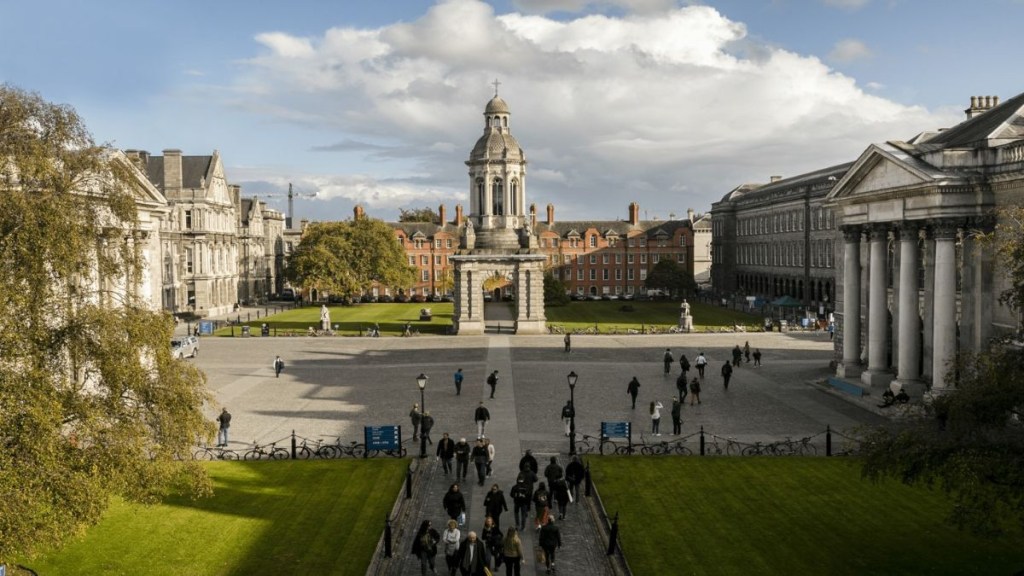While the number of Indian students going abroad has been rising over the years – the education ministry told Parliament in February that it touched a six-year high in 2022 at over 750,000 – in the small island nation of Ireland, it has grown 10 times in 10 years.
This growth, however, is on a very small base.
Barry O’ Driscoll, the regional manager for India & South Asia at Education in Ireland, told FE that in the year 2013 just around 700 Indian students came to Ireland for studying, but in 2023 this number is expected to cross 7,000. The numbers dropped by 20% in 2020 due to Covid-19, but have rebounded strongly since then.
The reasons he attributed to this rise are Irish universities being ranked amongst the top worldwide, Ireland being a native English-speaking country in the European Union, the nation emerging as a prominent corporate hub with more than 100 MNCs having their European headquarters or offices here, and the two-year stay-back visa.
“International students studying in Ireland can stay back for two years after graduation to seek employment,” O’ Driscoll said. “Ireland needs trained professionals to work in local offices of MNCs such as Google, Apple, Meta, Twitter (X), Deloitte, KPMG, Pfizer, etc. Students graduating from Irish universities have the opportunity to seek employment in these MNCs. This ensures students high return on investment for their education.”
He added that ‘word of mouth’ has also worked for the Irish higher education sector. “Over the years, Indian students studying and working in Ireland have told their friends and juniors back home about their experience,” he said. “While we don’t have the accurate figure on how many Indian graduates avail of the stay-back visa, and transition into the workplace, we know that about three-quarters of Indian postgraduate students come with the intention of availing of post-study career opportunities after their programme.”
The fact that 90% of Indian students go to Ireland for postgraduate studies (and only 10% for undergraduate) further proves that the two-year stay-back visa has significantly contributed towards making Ireland popular with Indians.
An education analyst told FE that finding a job with MNCs in Ireland right after graduation opens up ‘global job opportunities’ for students. On the condition of anonymity, he said: “Graduating from India and finding a job with a Google or a Deloitte in India is a great career progression, but oftentimes you stay within the subcontinent, because the requirements of the subcontinent itself are vast. Finding a job with the same MNCs at its EU headquarters can open up global economy jobs. You could go anywhere from Dublin – the US, Europe, the Middle East, or even back to India.”
UP NEET PG 2nd round seat allotment results out today: Steps to download and more
How the stay-back works
Non-EU/EEA students who have graduated from Irish higher education institutions can remain in Ireland for up to 24 months to seek employment.
To be eligible, student is required to have:
– An award granted by a recognised Irish awarding body, for example, Dublin Institute of Technology, Irish universities, Royal College of Surgeons in Ireland, etc.
– A Bachelor, Master or PhD degree.
– Employers can hire graduates who are eligible to work for up to 40 hours per week.
– A valid Garda National Immigration Bureau (GNIB) card which will be extended for up to 24 months.
– After 24 months, a student can be eligible for the Green Card or Work Permit Scheme.
O’ Driscoll added that while Irish universities offer courses in every field, some programmes that have gained popularity over the last few years are data science/big data, IT, computer science, software/electrical engineering, artificial intelligence, business and finance, pharmaceuticals, digital marketing, biotech/medtech and medicine.
Ireland, however, doesn’t figure high in list of countries that attract Indian students. The data presented by the Ministry of External Affairs states that 1,324,954 Indian students were studying abroad in 2022, with the top five countries being: the US (465,791 students), Canada (183,310), the UAE (164,000), Australia (100,009) and the UK (55,465).

